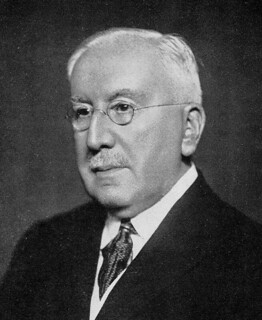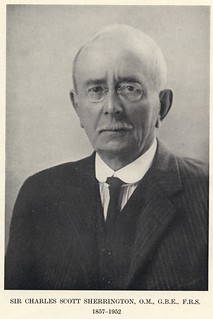- Creation
-
Creators (Definite): Sir Charles Alfred Ballance; Sir Charles Scott Sherrington; The Cambridge Scientific Instrument CompanyDate: 1889
- Current Holder(s)
-
- No links match your filters. Clear Filters
-
Cited by
 C.A. Ballance and C.S. Sherrington, 'On Formation of Scar-Tissue', Journal of Physiology 10 (6), (1889), pp. 550-578.
C.A. Ballance and C.S. Sherrington, 'On Formation of Scar-Tissue', Journal of Physiology 10 (6), (1889), pp. 550-578.
Tags: haemotoxylin, osmic acid
Description:Explanation of Plate XXXIII (figs. 14-19):
'Fig. 14. From chamber five days in subcutaneouis tissue. Plasma-cells adhering to a cotton-fibre. Osmic vapour and carmine. Zeiss apochlr. oil and oc. 4.
Fig. 15. From chamber eight days in subcutaneous tissue. Plasma-cells adhering to a hair, which had accidentally been allowed to get into the wound. Zeiss obj. D, oc. 2. Osmic acid solution and haematoxylin.
Fig. 16. Inflammatory membrane from chamber eight days in the abdominal cavity; taken from a tenuous portion of the membrane. Four fibroblasts, in a film which is composed of an extremely irregularly arranged network of filaments resembling fine fibrin threads. The processes from the cell-body are continuous apparently with the fibrils of the matrix. Osmic acid vapour and haematoxylin. Zeiss apochr. oil imm. and oc. 4. Outlined with camera lucida.
Fig. 17. Stellate fibroblasts and two leucocytes from same preparation as Fig. 9, more highly magnified. Zeiss apochr. oil and oc. 4. Outlined with camera lucida.
Fig. 18. The modified Ziegler chamber; the sketch shows the actual size employed.
Fig. 19. Portion of the chamber seen edgewise, showing the opening between the cover-glasses. Enlarged 12 times.' (576)
Figs. 14-15 n text:
'Contiguous plasma-cells or even those a little distance apart were often connected together by their processes (Figs. 1, 5, 7 and 8, Plates XXXI. and XXXII.). The bands of connection might be short thick arms or long gossamer threads of protoplasm. By similar arms and threads the cells seemed to adhere to the most diverse objects in their surrounding. The surface of the cover-glass, a filamllent of fibrin, a hair, a fibre of cotton, a lump of the cement fastening the sides of the chamber together, all afforded points to which the processes from the plasma-cells would cling (Figs. 14 and 15).' (560)
Fig. 16 in text:
'Each individual cell was of a discoid or fusiform figure, and granular, with a large clear nucleus. The edge of the disc was thin and often deeply scalloped; it merged, under all methods of staining used by us, at certain points quite imperceptibly, in a tenuous film which composed the bulk of the membrane proper. When fixed with osmic acid and after-stained with haematoxylin (Ehrlich's), this membrane is shown to contain, if not to be entirely made up of, a feltwork of filaments, like filaments of fibrin. These cross in every direction in the plane of the membrane, without prominent arrangement in any one particular sense. The individual filaments vary a good deal in size. Fig. 16, P1. XXXIII.' (561-562)
Fig. 18 in text:
'Two circular cover-glasses, each 5/8 of an in. in diameter and .006 of an in. in thickness, were fastened together so as to form a little flat glass chamber, in the manner employed by Ziegler. A strip of tinfoil placed between them at their edge along 11/12 of their circumference was cemented by shellac on each face to the corresponding surface of the cover-glass. The tiny chamber thus formed had therefore between the two ends of the strip of tin-foil an opening into the interior. The tin-foil first employed was 1/10 mm. thick; that thickness was inconvenient, as the depth of the chamber was then too great for higher powers of the microscope to explore. Tin-foil 1/20 mm. in thickness was subsequently employed. With this thickness membranes were obtained between the cover-glasses that made very satisfactory microscopical specimens. Fig. 18, Plate XXXIII.' (552-553)











